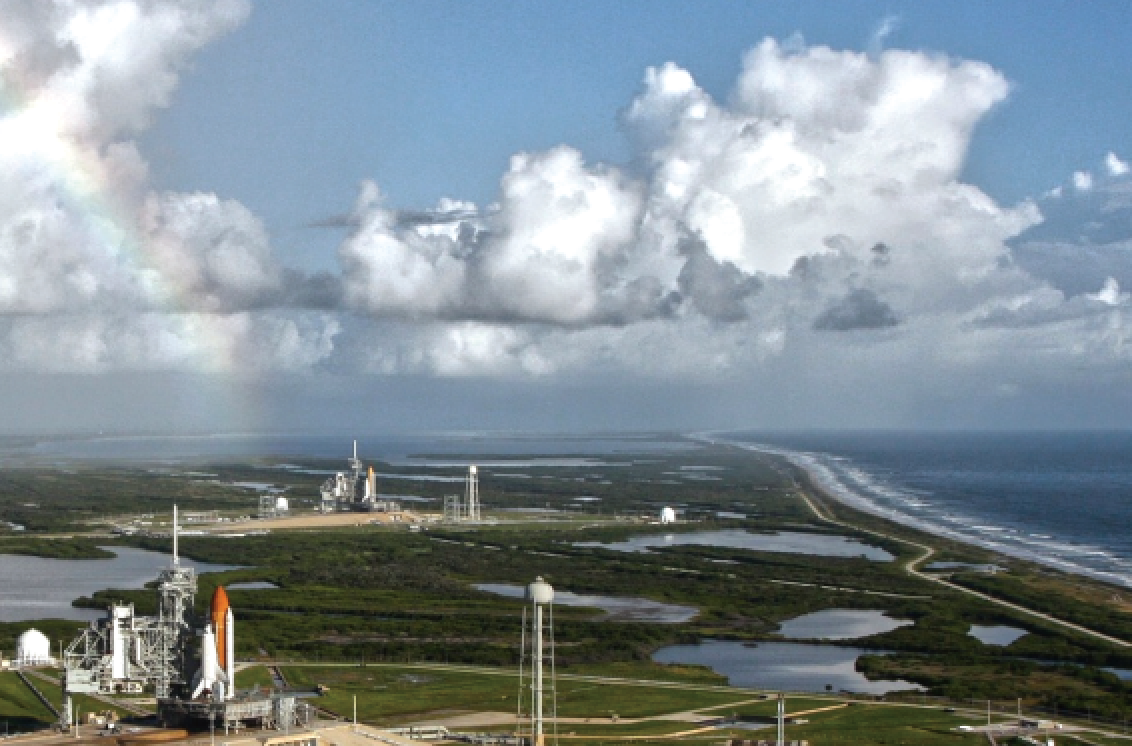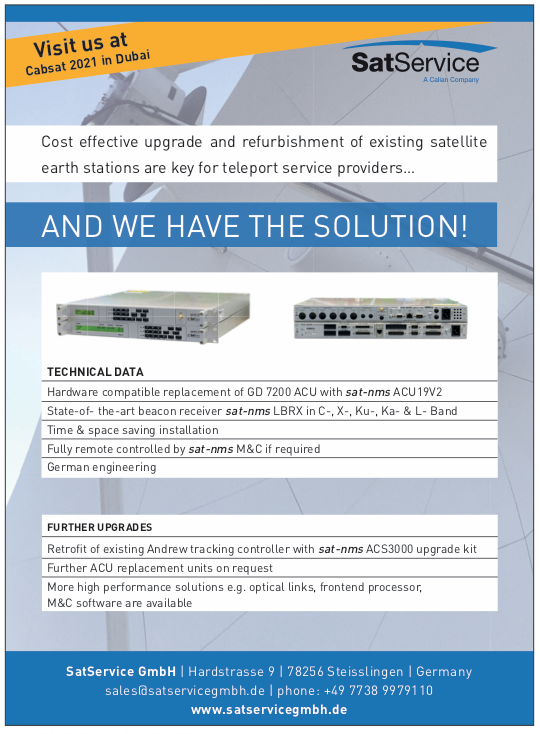Every day it seems there’s something new happening in space. Missions aboard rocket launches are becoming more commercial in nature. A transformation in launch services to space has opened up a Trillion Dollar space economy1 (the “New Space Economy”). Every day it seems there’s something new happening in space. Missions aboard rocket launches are becoming more commercial in nature. A transformation in launch services to space has opened up a Trillion Dollar space economy1 (the “New Space Economy”).

As space access is becoming commoditized, the transportation sector is expanding to include space as a separate transport category focused on getting equipment, hardware, and humans to space destinations. In order for the “space roadway” to be built, we need infrastructure and spaceports on Earth to assure space traffic is cleared for takeoff. In this article, we propose that commercial spaceports are the most needed investment to make this space transportation throughway happen.
Current Aerospace Landscape

In 2020, the U.S. led all other nations in launching 40 successful missions to space2. Not far behind was the People’s Republic of China with 35 successful launches and the Russian Federation with 173. In total, there were 104 successful flights in 2020 globally4. As of August 9, 2021, there have been 75 orbital launch attempts across the globe in 2021, with 71 successful missions5. On this same date in 2020, there had been 61 orbital launch attempts, with 55 successes6. Worldwide launches are predicted to increase dramatically over the next decade and this only includes vertical launch vehicles7.
Not only have we seen innovation in the vertical take-off vehicles, but there are other players on the horizontal take-off scene including commercial companies developing supersonic jets as well as electric aircraft. On June 3, 2021, for example, United Airlines ordered 15 (with an option for 35 more) “Overture” supersonic airliners from Boom Supersonic, a U.S. company developing large, supersonic, commercial aircraft, which are expected to be net-zero carbon from day one, optimized to run on 100 percent sustainable aviation fuel8. Although supersonic business jet developer Aerion Supersonic closed its doors in May of 20219, the announcement by the FAA to revisit its requirements and facilitate supersonic flight over land10 will allow other commercial players to enter the supersonic market.
United Airlines also announced this year that it was ordering 100 ES-19 electric aircraft, a 19-seat electric aircraft that has the potential to fly customers up to 250 miles, from Heart Aerospace11, an electric airplane company based in Sweden.
Between the focus and investment of the commercial airlines on sustainability in aircraft and given the rapid development timeline of these passenger vehicles, the point-to-point travel market on Earth will be greatly disrupted in the next decade. This could include SpaceX’s Starship, which is expected to fly suborbital flights (passenger and cargo) on Earth in addition to going to the Moon and Mars.
Space tourism is now a reality after the successful first flights of Virgin Galactic’s VSS Unity12 and Blue Origin’s New Shepard13, both in July of 2021. Furthermore, Space Perspective, a balloon intending to bring tourists and payloads to the stratosphere14, plans to start commercial operations in 2022 and is currently testing its Spaceship Neptune. And these are just a few of the suborbital tourism players. In Low Earth Orbit (LEO), Axiom Space and Sierra Nevada Corporation are creating accessible platforms as space destinations for both private and professional astronauts.
Additionally, the U.S. military is investing in the use of commercial rockets (such as SpaceX’s Starship) to deliver heavy military cargo in less than an hour anywhere on Earth15, as well as in the development of hypersonic technology and aircraft that require horizontal launch capabilities16. The U.S. military plans to spend nearly $48 million next year on a program that could eventually allow shipment of heavy cargo around the world in less than an hour using giant commercial rockets. Furthermore, the budget in the U.S. for hypersonics has increased ten-fold since 2016 and is expected to continue to rise; especially given that we are still at the early stages in developing reusability capabilities as well as real-life testing of these vehicles17.
Commercial spaceports also make sense in the context of the continued public private partnerships that are emerging across the globe to accomplish certain national goals to explore and establish settlements starting with the Moon and Mars. In February of 2021, for example, the People’s Republic of China, the United Arab Emirates and the United States all arrived in Mars via state-sponsored probes and landers18. Much of the hardware and software used on these probes and landers were provided by commercial providers to the State operators through cooperative efforts.
In addition to the space-related interests of nations, other space markets are becoming important in a variety of industries such as commercial cargo delivery, crew transportation, commercial space stations, satellite servicing, additive manufacturing, commercial moon bases, in-space resource extraction (including asteroid mining), on-orbit propellant depots, and solar power satellite systems19. Earth observation is an already well-established market for commercial satellites.
As investors are focused on environment, social, and governance linking space and sustainability, key data on environmental impacts is in high demand20. For example, farmers are getting this remote sensing data allowing the improvement of their ability to predict weather and measure rainfall and soil conditions which leads to more efficient farming practices and the ability to provide for Earth’s ever-growing populations in new and innovative ways.
Existing Spaceports + Military Framework This article focuses on the Eastern Ranges21, given the desire to launch into equatorial orbit, which means demand for launches from the Eastern United States. The Western Ranges22 are limited to polar orbit launches.
SpaceX’s Falcon rocket, however, proved that it can launch into polar orbit from Florida23, making the Eastern United States desirable for all launches. Most launches into polar orbit depart from Vandenberg Air Force Base in California, but demand for polar orbit is significantly lower than that for equatorial orbit.
Cape Canaveral Air Force Station’s spaceport is almost at full capacity24. It hosts five companies at its launch facilities, three more than a decade ago25. More than a dozen new companies have asked for launch property on the Space Coast, but available real estate is limited26. Even so, spaceports involve more than just a slab or runway as homes to places far beyond testing and launch, they represent a portion of the entire ecosystem of spaceflight itself. 49 USC 47101(a)(5) states that it is U.S. policy “to encourage the development of intermodal connections on airport property between aeronautical and other transportation modes and systems to serve air transportation passengers and cargo efficiently and effectively and promote economic development.”27
Cape Canaveral and the Eastern Range are basically at capacity and were initially established for primarily military and national missions in the 1960s. Aging infrastructure at these facilities need upgrades, expansion, and renovation28. The existing water management district is at full capacity. Office space is limited for employees of commercial enterprises already doing business on-site. In addition, environmentally protected areas need to be evacuated for launch days.
Further, the establishment of the U.S. Space Force (USSF) and the stated necessity to treat space as a potential war-fighting domain has driven up the national security demand for space transportation. New technologies directed at data management, cybersecurity, and space situational awareness are needed to serve the U.S. national security interests29. The incoming tide of hypersonic technology development reinforces the argument for the U.S. military to have distinct operations and support its military goals30 while allowing the commercial economy to operate separately and efficiently on its own.
The USSF does has plans to update Cape Canaveral and Vandenberg Air Force Bases in terms of infrastructure and processes, but this will evolve slowly over the next decade31. The timeline for demand for commercial launches appears to be significantly shorter32. If the goal is “on-demand, assured access to space”33, then the existing spaceports, which provide launch services using military resources, are way behind on the commercial timeline to adequately respond to the requested demand by private companies. As more and more commercial launches are anticipated, commercial spaceports are the logical response to handle such excess demand as well as the need for modern infrastructure.

Currently, the USSF Ranges are currently doing joint military and commercial operations. As previously mentioned, the People’s Republic of China is not far behind the U.S. in launches and the Russian Federation is third, of which a majority of launches are for Chinese and Russian national interests. What happens if those joint operations no longer serve the best interest of the U.S. government? Further, commercial fights, not national-security missions, now comprise more and more of the Space Force’s workload34. Could commercial players get pushed out or have their space operations terminated? Even if not terminated, delays in scheduling launch have a major impact on the cost of doing business. This could potentially be a huge hit to the New Space Economy.
Looking To The Future: What Is Needed?
Dedicated real estate, enough to support vertical and horizontal launch and separate military technology from commercial, is needed first and foremost. This includes launch and reentry as well as providing collision avoidance zones. With Cape Canaveral almost at capacity, other desirable locations with available land need to be identified and developed for spaceport based activities.
The good news is there are already a number of commercial spaceports in existence, plus a number of others proposed which can, with the proper funding, be developed quickly to address the demand for commercial space operations35. These locations, however, need strategic investment from the private sector as well as specialized know-how to evaluate and understand the needs, priorities, and timelines of commercial space companies, allowing for significant improvement of the options available for space access at a much lower cost than otherwise thought possible.
Manufacturers will need facilities for manufacture, repair, and maintenance. Payload processing and tourist training will be needed to prepare for launches. Large storage facilities will be required as will areas designated for the destructive testing needed for rocket, spacecraft, and aircraft development and on-going operations. Water management districts, seaports, rail access, and office space are all part of creating an environment geared towards efficiency. Other infrastructure such as roads and bridges will need to be built to move heavy equipment to and from launch pads and both on-site and off-site facilities. Just as FBOs36 exist in airports, spaceport bases of operations (SBOs) need to be available to provide the different fuel types need for each aircraft and spacecraft as well as hangar space.
In order to accomplish these real estate development goals, public private partnerships are needed with the FAA, airport authorities, and local municipalities and universities. Government support in the form of feasibility studies and demand mapping are required now to prepare for a functioning SBO in a particular location to allow access to space. The benefits to local areas include jobs creation and building a STEM-educated workforce as well as cultural benefits for the human capital surge arising from the operations of a spaceport. Further, 51 USC Subtitle V allows for promotion of commercial space opportunities and requirement to procure commercial space transportation services. This commercial paradigm shift represents an opportunity for the commercial sector to accelerate and act as a force multiplier to government investments.
Real estate alone is not the only concern. Airspace itself is an asset and priority of users, volume demand on airspace, and launch timing are important elements to spaceport planning37. Spaceport planners should seek out options that reduce or limit the disruption to other airspace users. The interests of commercial space users have to be balanced against the interest of other commercial airspace users, as well as the military or other state actors38, which interests may conflict. The longer the launch window, the more expensive it is to launch due to the disruption and re-routing of other airspace users. The larger the volume of airspace needed for launch, the more of a burden the launch is on the underlying and overlying airspace.
The most efficient way to address these conflicts and prioritize airspace is to develop as many spaceports as possible to cater to different airspace needs and reduce the launch windows and the size of the airspace required through technological advances. Even the USSF is even considering an airport model to prioritize launches and shift to different ranges when it becomes too congested to schedule efficiently39.
One of the most pressing needs is a network based communications system that would allow commercial companies’ tools to share data with the USSF and others without running into encryption or other problems40. Newer means of collecting telemetry data, such as mobile vans equipped to operate anywhere could be accommodated, creating a plug and play environment. For example, when this network is combined with multi-use facilities, a company can show up within a day of launch, set up its rocket, the rocket takes off and the company leaves in 24-36 hours. This is a potential game changer in accessibility to space, reducing the launch windows and overall impact on other airspace users significantly.
By 202341, all rockets are required to have autonomous flight safety systems (AFSS)42 which automatically self-destructs the launch vehicle if it veers off course. This is critical because it cuts down on launch prep time along with easing the strain on resources and staffing needs. This equals less pressure on the Ranges. Between the AFSS and network-efficient operations possibilities available in commercial spaceports, prep time would cut down from 72 hours to 4 hours. In addition to this time efficiency, the development of reusable launch vehicles, recoverable payload fairings, fly-back boosters, as well as the AFSS further drives down the cost to launch and changes how future space operations will be conducted. This would allow the response to this demand for commercial space activities to be at the “speed of business” as opposed to where it currently is, at the “speed of government.”43
In sum, the development of commercial spaceports not only offers an opportunity to increase the safety, capacity, efficiency, and resiliency of space operations, but it also creates multiple opportunities for private investors, such as real estate developers and leasing companies. Infrastructure financing relating to fuel supply, transportation, rail and shipping lines will also allow traditional investors to support the New Space Economy.
Future commercial spaceports will consist of both government- and privately- owned-and-operated launch and landing sites. Continued operations in FBOs, SBOs, payload processing, human spaceflight training, and maintenance/repair facilities will create new jobs and help to develop a specialized workforce in the surrounding areas which will serve as technology hubs, strengthening the aerospace industrial base and allowing for a robust space launch infrastructure.
References
1 Kevin O’Connell, ‘Remarks on the Trillion Dollar Space Economy’, prepared for SpaceCom 2018 Conference, Office of Space Commerce website (online November 27, 2018) www.space.commerce.gov/remarks-on-the-trillion-dollar-space- economy/
2 Stephen Clark, ‘U.S. Companies, led by SpaceX launched more than any other country in 2020’, SpaceFlightNow website (online January 5, 2021) spaceflightnow.com/2021/01/05/u-s-companies-led-by-spacex-launched-more- than-any-other-country-in-2020/
3 IBID
4 IBID
5 spaceflightnow.com/launch-log/
6 IBID
7 Global Spaceport Alliance, ‘National Spaceport Network Development Plan’, FAA website (online June 1, 2020) www.faa.gov/about/office_org/headquarters_ offices/ast/advisory_committee/meeting_news/media/2020/june/National_ Spaceport_Network_Development_Plan.pdf
8 United Airlines Press Release, ‘United Adding Supersonic Speeds with New Agreement to Buy Aircraft from Boom Supersonic’, United website (online June 3, 2021) hub.united.com/2021-06-03-united-adding-supersonic-speeds-with- new-agreement-to-buy-aircraft-from-boom-supersonic-2653216403.Html
9 Michael Sheetz, ‘Aerion Supersonic shuts down, ending plans to build silent high speed business jets‘, CNBC website (online May 21, 2021) www.cnbc. com/2021/05/21/aerion-supersonic-shuts-down-ending-plans-for-silent- business-jets.html
10 FAA Press Release, ‘FAA Announces Final Rule to Facilitate the Reintroduction of Civil Supersonic Flight’. FAA website (online January 6, 2021) www.faa.gov/ news/press_releases/news_story.cfm?newsId=25581
11 United Airlines Press Release, ‘Electric Aircraft Set to Take Flight by 2026 Under New Agreements with United Airlines Ventures, Breakthrough Energy Ventures, Mesa Airlines, Heart Aerospace’, United website (online July 13, 2021) hub. united.com/electric-aircraft-set-to-take-flight-by-2026-under-new-agreements-with-united-airlines-ventures-breakthrough-energy-ventures-mesa-airlines-heart-aerospace-2653765004.html
12 Chelsea Gohd, ‘Virgin Galactic launches Richard Branson to space in 1st fully crewed flight of VSS Unity’, Space website (online July 11, 2021) www.space. com/virgin-galactic-unity-22-branson-flight-success
13 Jeff Foust, ‘Blue Origin launches Bezos on first crewed New Shepard flight’, SpaceNews website (online July 20, 2021) spacenews.com/blue-origin- launches-bezos-on-first-crewed-new-shepard-flight/
14 Mike Wall, ‘Space Perspective wants to take tourists on balloon rides to the stratosphere’, Space website (online, June 18, 2020) www.space.com/space- perspective-stratosphere-balloon-tourism-flights.html
15 Stephen Clark, ‘New military program to study using huge rockets for global cargo delivery’, SpaceFlightNow website (online June 4, 2021), spaceflightnow. com/2021/06/04/new-military-program-huge-rockets-for-global-cargo-delivery/
16 David Vergun, DOD News, ‘Defense Officials Outline Hypersonics Development Strategy’, United States Department of Defense, (online February 27, 2021) www. defense.gov/Explore/News/Article/Article/2518370/defense-officials-outline- hypersonics-development-strategy/#:~:text=The%20hypersonic%20strategy%20 is%20being%20implemented%20in%20a,as%20working%20collaboratively%20 with%20our%20allies%2C%20where%20appropriate
17 David Vergun, DOD News, ‘Defense Officials Outline Hypersonics Development Strategy’, United States Department of Defense, (online February 27, 2021) www. defense.gov/Explore/News/Article/Article/2518370/defense-officials-outline- hypersonics-development-strategy/#:~:text=The%20hypersonic%20strategy%20 is%20being%20implemented%20in%20a,as%20working%20collaboratively%20 with%20our%20allies%2C%20where%20appropriate
18 Morgan McFall-Johnson, ‘3 spacecraft are set to reach Mars this month, from NASA, China, and the UAE. Here’s what they aim to learn’, Business Insider website, (online February 4, 2021), www.businessinsider.com/three-mars-missions-arrive- february-from-nasa-china-uae-2021-1
19 Global Spaceport Alliance, ‘National Spaceport Network Development Plan’, FAA website (online June 1, 2020) www.faa.gov/about/office_org/headquarters_ offices/ast/advisory_committee/meeting_news/media/2020/june/National_ Spaceport_Network_Development_Plan.pdf
20 Morgan Stanley Research, ‘5 Key Themes in the New Space Economy’, Morgan Stanley website (online February 4, 2021), www.morganstanley.com/ideas/space- economy-themes-2021
21 A “Range” is defined as an area in and over which rockets are fired for testing and tracking. In the case of the “Eastern Range”, it starts at the launch pads at Cape Canaveral Air Force Station and Kennedy Space Center and extends eastward over the Atlantic Ocean and into the Indian Ocean where it meets the “Western Range”, which is the space launch range that supports launches from Vandenberg Air Force Base in California. Source: NASA website www.nasa.gov/centers/kennedy/home/ eastern_range.html
22 IBID
23 Stephen Clark, ‘SpaceX launches first polar orbit mission from Florida in decades’, SpaceFlighNow website (online August 31, 2020) spaceflightnow.com/2020/08/31/ spacex-launches-first-polar-orbit-mission-from-florida-in-decades/
24 Rachel S. Cohen, ‘Building the Space Range of the Future’, Air Force Magazine website (online May 1, 2020) www.airforcemag.com/article/building-the-space- range-of-the-future/
25 IBID
26 IBID
27 United States Code. 49 U.S.C. Chapter 471, Policies. http://uscode.house.gov/ view.xhtml?req=granuleid%3AUSC-prelim-title49-chapter471&edition=prelim
28 IBID
29 Global Spaceport Alliance, ‘National Spaceport Network Development Plan’, FAA website (online June 1, 2020) www.faa.gov/about/office_org/headquarters_ offices/ast/advisory_committee/meeting_news/media/2020/june/National_ Spaceport_Network_Development_Plan.pdf
30 Oriana Pawlyk, ‘The Pentagon Wants a Mix of Hypersonic Weapons. Here’s Why.’, Military website (online May 4, 2020) www.military.com/daily-news/2020/03/04/ pentagon-wants-mix-hypersonic-weapons-heres-why.html
31 IBID
32 Global Spaceport Alliance, ‘National Spaceport Network Development Plan’, FAA website (online June 1, 2020) www.faa.gov/about/office_org/headquarters_ offices/ast/advisory_committee/meeting_news/media/2020/june/National_ Spaceport_Network_Development_Plan.pdf
33 Rachel S. Cohen, ‘Building the Space Range of the Future’, Air Force Magazine website (online May 1, 2020) www.airforcemag.com/article/building-the-space- range-of-the-future/
34 Rachel Cohen, ‘Now boarding: Space Force wants to turn launch ranges into rocket “airports”’, AirForceTimes website (online June 3, 2021) www.airforcetimes.com/ news/your-air-force/2021/06/03/now-boarding-space-force-wants-to-turn-launch- ranges-into-rocket-airports/ >
35 Global Spaceport Alliance, ‘National Spaceport Network Development Plan’, FAA website (online June 1, 2020) www.faa.gov/about/office_org/headquarters_ offices/ast/advisory_committee/meeting_news/media/2020/june/National_ Spaceport_Network_Development_Plan.pdf
36 A “FBO” or “fixed-base operator” is an organization granted the right by an airport to operate at the airport and provide aeronautical services such as fueling, hangaring, tie-down and parking, aircraft rental, aircraft maintenance, flight instruction, and similar services.
37 Janet K. Tinoco, Chunyan Yu, Diane Howard, and Ruth E. Stilwell, ‘An Introduction to the Spaceport Industry: Runways to Space’, Routledge, Oxon and New York, 2020.
38 IBID
39 Rachel Cohen, ‘Now boarding: Space Force wants to turn launch ranges into rocket “airports”’, AirForceTimes website (online June 3, 2021) www.airforcetimes.com/ news/your-air-force/2021/06/03/now-boarding-space-force-wants-to-turn-launch- ranges-into-rocket-airports/
40 Rachel S. Cohen, ‘Building the Space Range of the Future’, Air Force Magazine website (online May 1, 2020) www.airforcemag.com/article/building-the-space- range-of-the-future/
41 Chris Gebhardt, ‘Eastern Range updates “Drive to 48” launches per year status’, NASASpaceFlight website (online August 15, 2019) < www.nasaspaceflight. com/2019/08/eastern-range-drive-48-launches-per-year-status/#more-62778
42 Rachel S. Cohen, ‘Space Force Preps for 49 Launches at Cape Canaveral’, Air Force Magazine website (online February 26, 2020) www.airforcemag.com/space- force-preps-for-49-launches-at-cape-canaveral/
43 Global Spaceport Alliance, ‘National Spaceport Network Development Plan’, FAA website (online June 1, 2020) www.faa.gov/about/office_org/headquarters_ offices/ast/advisory_committee/meeting_news/media/2020/june/National_ Spaceport_Network_Development_Plan.pdf
Marie-Pierre Grondin is a partner at the firm’s Miami office. She is a member of the banking and asset finance practice group. Her practice focuses on aviation and satellite financing, as well as equipment leasing and related transactional work, including structured finance arrangements, private placements of debt and equity, asset based financing, and leveraged leasing.

Marie-Pierre gained her experience both external and in-house roles advising private companies, publicly-held companies, financiers, private equity funds, aircraft and engine lessors, MROs, and other stakeholders on a variety of transactions.
Prior to joining the firm, Marie-Pierre served as counsel at an international law firm where her practice was primarily advising on a variety of transactions in the aviation, aerospace, real estate, corporate, and finance sectors. Prior to returning to private practice, she was responsible for all the legal aspects of the global operations for a diverse aviation, leasing, and MRO (maintenance repair and overhaul) company and all of its subsidiaries.

